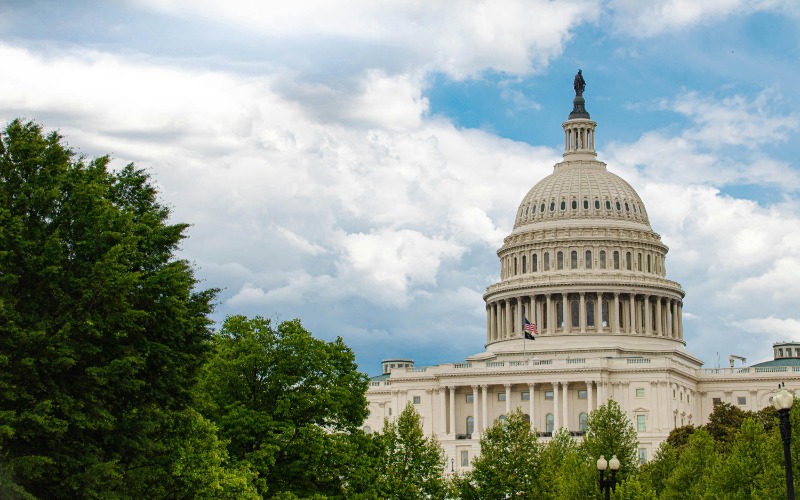In the realm of public service, the adoption of distributed systems is more than a technological advancement; it’s a transformative shift that redefines how government agencies interact with and serve citizens. The McKinsey Global Institute estimates that integrating data and analytics in public and social sectors can potentially create a value of approximately $1.2 trillion annually. This staggering figure underscores the significant impact data-driven decision-making and distributed technologies have on improving public sector efficiency and service delivery.
These systems, characterized by decentralized networks that distribute workload across multiple interconnected nodes, promise to revolutionize citizen services. From enhancing data accessibility to ensuring real-time service delivery and bolstering security measures, distributed systems hold immense potential. As governments worldwide grapple with increasing demands for transparency, efficiency, and accessibility, leveraging distributed systems becomes not just an option but a necessity. The following sections delve into how these systems can be harnessed effectively within government agencies to elevate the quality and reach of citizen services.
Streamlining Data Management and Accessibility
In the rapidly evolving landscape of government services, distributed systems have become a cornerstone for efficient data management and accessibility. These systems facilitate a decentralized approach to handling data, allowing for more resilient and flexible data management strategies. For instance, governments have increasingly embraced cloud computing platforms, such as Amazon Web Services (AWS), for their robustness and scalability. AWS offers a comprehensive suite of services that enable governments to manage large volumes of data efficiently, enhance collaboration among different agencies, and ensure the continuous availability of critical information. Adopting cloud services represents a significant shift from traditional on-premises data centers, offering enhanced accessibility and flexibility in data management.
The effectiveness of these distributed systems in public sector data management is evident from their role in responding to the COVID-19 pandemic. Real-time data management and sharing were key to resilience during this crisis. For example, the US National Institutes of Health established a centralized repository for COVID-19 health records, which played a crucial role in facilitating research and discovery. Additionally, the European Union set up a region-wide interoperability gateway for secure information exchange between different national contact-tracing apps. These initiatives demonstrate how distributed systems can significantly improve the agility and effectiveness of government response in crises. The trend towards more dynamic data management and sharing in government agencies is characterized by establishing specialized data portals and adopting FAIR (findable, accessible, interoperable, and reusable) principles, ensuring that public data is efficiently accessible and standardized for broader use.
By leveraging distributed systems like AWS and adopting innovative data sharing and management approaches, government agencies can significantly enhance their service delivery, ensuring timely and effective responses to public needs.
Improving Service Delivery and Responsiveness
In recent years, government agencies have increasingly turned to advanced technologies like cloud computing to enhance service delivery and responsiveness. A compelling example is using Google Cloud Platform (GCP) by various government agencies. GCP provides a suite of cloud services that include data storage, machine learning, and analytics, all of which can significantly improve the efficiency and effectiveness of government service delivery. By leveraging these technologies, agencies can process and analyze large volumes of data quickly, enabling them to respond more rapidly to citizen needs and make more informed decisions.
However, despite these advancements, there is still a notable gap in the digital experience provided by government services compared to the private sector. In 2019, 80% of federal agencies scored “poor” or “very poor” on Forrester’s US Federal Customer Experience Index, highlighting the need for further improvement. Governments are actively working to bridge this gap by integrating new technologies into their service delivery models. For example, governments can save up to 1.2 billion hours of work by adopting cloud services and AI. This transformation is about adopting new technologies and rethinking how services are delivered to citizens. It’s about moving away from traditional methods and embracing innovative models that are more efficient, effective, and user-friendly.
The integration of technologies like AI and cloud computing in government service delivery is transforming how services are offered. From virtual inspections to proactive issuance of documents like birth certificates, governments are finding new ways to deliver services more efficiently and effectively. This approach not only saves time and resources but also enhances the overall citizen experience, making government services more accessible and responsive to the needs of the public.
Enhancing Security and Privacy in Government Operations
The importance of cybersecurity in government operations has never been more critical, with agencies increasingly dependent on information technology systems for their operations. These systems and the data they handle are vital to public confidence and national security. However, the government faces significant challenges in this regard. For instance, since 2010, the U.S. Government Accountability Office (GAO) has made about 3,300 recommendations to agencies aimed at remedying cybersecurity shortcomings, but as of December 2020, more than 750 of those recommendations have not yet been implemented. This underscores a persistent gap in addressing key cybersecurity issues within government agencies. The GAO emphasizes the need for a comprehensive cybersecurity strategy and effective oversight to address these challenges. The strategy should include securing federal systems and information, protecting critical infrastructure, and safeguarding privacy and sensitive data.
Moreover, the cybersecurity landscape in government entities has been rapidly evolving, particularly in the wake of the COVID-19 pandemic. According to BitSight research, the shift to remote work has introduced a variety of new and evolving cyber threats. State and local governments across the United States have experienced an increase in public security incidents, including over 70 ransomware attacks in a year. This situation has put increased pressure on state Chief Information Officers (CIOs) and Chief Information Security Officers (CISOs) to demonstrate effective risk management programs. Despite improvements in certain areas, major challenges remain, such as managing patching cadence and SSL configurations, which are crucial for preventing cyber-attacks.
In this environment, cloud services like Microsoft Azure offer robust solutions to enhance the security posture of government agencies. Azure provides advanced security features, including threat protection and identity management, which can significantly improve an agency’s ability to respond to and mitigate cyber threats. By leveraging such services, government agencies can strengthen their defenses against cyber-attacks and protect critical national infrastructure and sensitive data.
Toward a More Connected and Secure Future
The integration of distributed systems in government agencies heralds a new era of efficiency, responsiveness, and security in public services. By embracing technologies like cloud platforms and advanced cybersecurity measures, agencies can vastly improve data management, and service delivery, and safeguard against evolving cyber threats. The journey towards digital transformation in government is not without its challenges, as highlighted by the significant need for a comprehensive cybersecurity strategy and the ongoing efforts to bridge the digital experience gap between the public and private sectors. However, the progress made thus far promises a future where government services are more accessible, agile, and secure, ultimately leading to enhanced citizen trust and engagement in the digital age.











